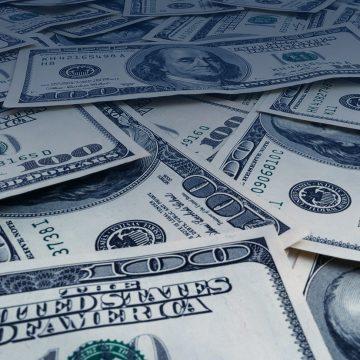
This article is devoted to the idea of fiat currency and everything behind this notion. What is fiat money? When and what for it appeared? What value does it have? Which advantages and drawbacks does it have? Answers to these questions and more are in the article below.
What is fiat money
Fiat money is the banknotes we keep in the wallet and the sums we look at happily, logging in the mobile app of our bank on the smartphone. It is not suported by the country’s gold reserves or other precious metals. It does not have any internal cost, and its face value is set and guaranteed by the state.
Today almost all popular currencies, such as the dollar and euro, are fiat. Their value is based on the opportunity to exchange them for goods and services, to be used as means of saving and account unit of the country’s economy.
Some think that as long as fiat money is not bound to any goods, a risk of inflation emerges, which, in turn, makes goods and services pricier. For example, in the times of gold standard, the amount of money depended on the amount of assets in the country’s reserves: more gold – more money.
Fiat money is substantilly influenced by the demand and trust of local people. If they stop believing in the national currency, they will reject it, and the demand for other assets and currencies will increase.
A currency supported by gold has internal cost because of the demand for the precious metal. Gold prices may fall but the currency implies being exchanged for the metal. What is more, over the past 20 years, gold prices have increased virtually 7 times.
When fiat money appeared
First coins made of precious metals appeared in China: this money maintained the army and was collected as taxes. However, the demand for coins began to exceed the amount of metal itself, which made people switch to banknotes.
Some say that in Rome money was used as it is used now. Roman civilisation was one of the world’s largest, and its decay happened out of imperfect economy and huge inflation, provoked by the emperor. He ordered to make money out of lead instead of precious metals. Experts say, it was fiat money, indeed.
In modern history, the US once tries to bind the dollar to gold, but the idea was abandoned in 1971 already because gld reserves were being drained out fast. Currency rates stopped being fixed and started depending on emand and supply only.
Advantages of fiat currencies
- Fiat money is used for exchanging and storing value, which is essential for the functioning of the national economy;
- Making fiat money is more economic than making currencies bound to certain assets;
- Fiat money lets the government and Central bank stimulate the economy in times of crises and smooth out the aftermaths of sky-rocketing;
- Fiat money is not a scarce or limited resource: the government can print as much as needed;
- Central banks have full control over the supply of fiat money, which lets them manage liquidity and interest rates.
Drawbacks of fiat money
The strong economic crisis of 2008 demonstrated that Central banks cannot always hold back serious consequences of recession by directly regulating the money mass. Hence, global crises will come back from time to time, having absolutely different nature.
A currency bound to gold looks more stable compared to fiat money because of limited gold supply. Fiat money, on the contrary, has value as long as the government supports it. Tiniest problems in either economy or politics can provoke a surge of inflation.
There are examples of trying to get out of economic trouble by active money printing that le to hyperinflation and the national currency fully losing value.
Bottom line
Fiat money is not perfect as it has serious drawbacks, yet it has no better alternative that would fast and smoothly replace it as a means of exchange, payment, and value storage.
One could bring up cryptocurrencies that has been acquiring popularity recently. They are limited in quantity, its cost must be growing until the last coin is mined, and this is a victory over the inflation of fiat money. However, due to high volatility and virtuality this type of money has not yet become a full replacement for the “normal” one.
Experiments with tightly binding money to gold have not yet yielded satisfactory results either; and hyperinflation may occur to any printed currency. With all the drawbacks, however, fiat money lets the government and Central banks react timely to the changes of the economic environment and keep markets stable and makes it easier for consumers to buy and sell goods and services.
The post Fiat Currency: All One Needs to Know appeared first at R Blog – RoboForex.
